The lakeside city of Udaipur has one of the most beautiful settings in all of India, nestled among the hills and waterways of the Aravalli Range.
With its glorious, dream-like palaces and magical sunsets, it was perhaps inevitable that it would one day be featured in a James Bond film. And sure enough, back in 1983, locals would’ve seen Roger Moore donning his 007 slacks, seducing the ladies and challenging the villains among those very palaces. The film was Octopussy – a notably cheesy entry in the series – and ever since watching it I’ve wanted to visit Udaipur. I got my chance on our holiday in Delhi and Rajasthan, and we chose to make it our final stop. We witnessed local life, toured amazing buildings and relaxed by the pool for a few days after a relentless week of travelling and sightseeing. We’d opted to stay to the east of the city at the 5-star Trident Hotel, which is set in beautifully tended gardens with magical views of Lake Pichola, far removed from the busy city centre, its sights, sounds and smells.
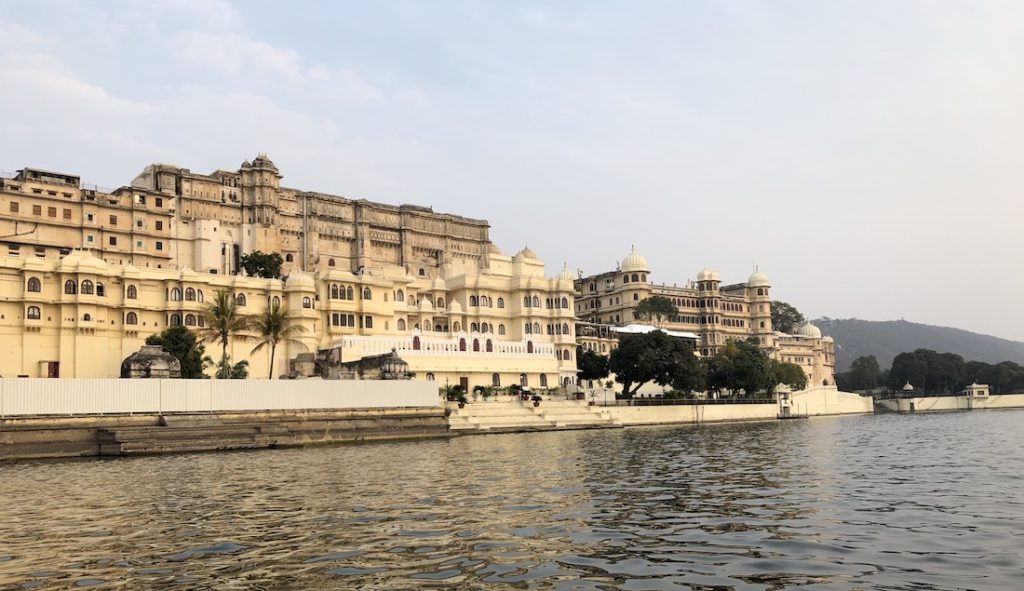
Pichola is one of several lakes in and around Udaipur and all are artificial, created when a series of streams were dammed in the 14th century. It was part of an ambitious engineering project designed to provide drinking water and supply vital irrigation networks. One evening we went for an hour-long boat trip laid on by the hotel, joining a couple of friendly, elderly Americans, who sported a huge camera and had fallen in love with India over many visits. The trip was timed to coincide with sunset and a more beautiful, romantic experience I can’t imagine. We skirted the breathtakingly regal white marble Lake Palace, Udaipur’s trademark building, which looks as if it’s afloat on the water but was actually built on a small island. The 18th century palace is now a fancy hotel that’s out of bounds to those of us without money to burn and it starred as Octopussy’s lair in the Bond movie. Nearby is the Jag Mandir Palace, a marginally less impressive royal building on a slightly larger island that’s now used mostly for wedding ceremonies and parties. A few fishermen were out on the lake as the sun set, bringing in their nets, but there are years when those very same fishermen would be in need of alternative employment because when the rains fail, the lake can dry up and the palaces are left stranded.

In the distance, high on a hill, stands the Monsoon Palace, another royal retreat built for the Maharanas who once ruled Udaipur and the state of Mewar. It goes without saying that they must’ve been fabulously rich – and probably still are judging by the fact that they still own so many of the city’s historic buildings. The palace was another of the Bond locations, serving as villain Kamal Khan’s mountain-top getaway, but it’s fallen into disrepair since and so we resisted the urge to drive there for a visit.
The City Palace sits on the east bank of the lake and remains the principal residence of the royals. Construction began in the 16th century but continued for centuries, resulting in an extravagant complex of buildings in the Rajasthani and Mughal styles. Nowadays some of them house heritage hotels, which must have excellent views of the lake, but others are a museum. And it’s a huge museum, a maze of quiet courtyards, claustrophobic passages and fancy rooms, all of them busy with tourists posing for selfies and getting in the way. Many of the rooms boast top quality mirror-work, marble carving, murals, paintings, silver, inlay and stained glass. As we’d found elsewhere in India, the craftsmanship on show was exceptional.
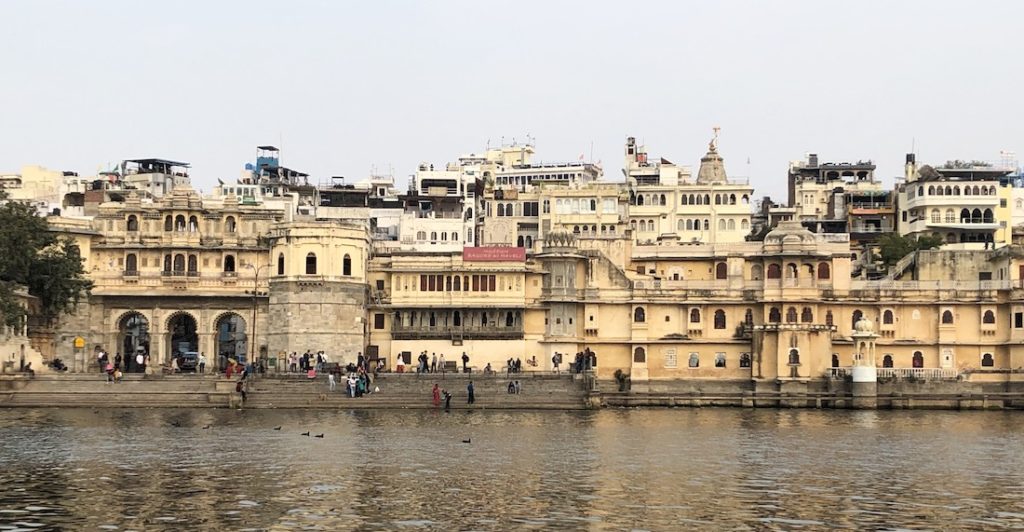
Later on our tour of the palace grounds we visited the Durbar Hall, scene of many regal gatherings over the years, lined with portraits of the royal family and lit by glittering chandeliers. The neighbouring Crystal Gallery houses an astonishing collection of crystal ordered by Maharana Sajjan Singh from a British company in the 1870s. However, he’d breathed his last by the time the consignment finally arrived and the boxes containing his treasures remained packed up and forgotten for more than a century, which says a lot about the extravagance of the Indian royals at the peak of the Raj. The Maharana had demanded all manner of things made out of crystal, not just glasses, vases, dishes and chandeliers, but also chairs, tables, sofas and even beds. It’s an absolutely bonkers collection and there were very few people about to get in the way, which made a pleasant change.
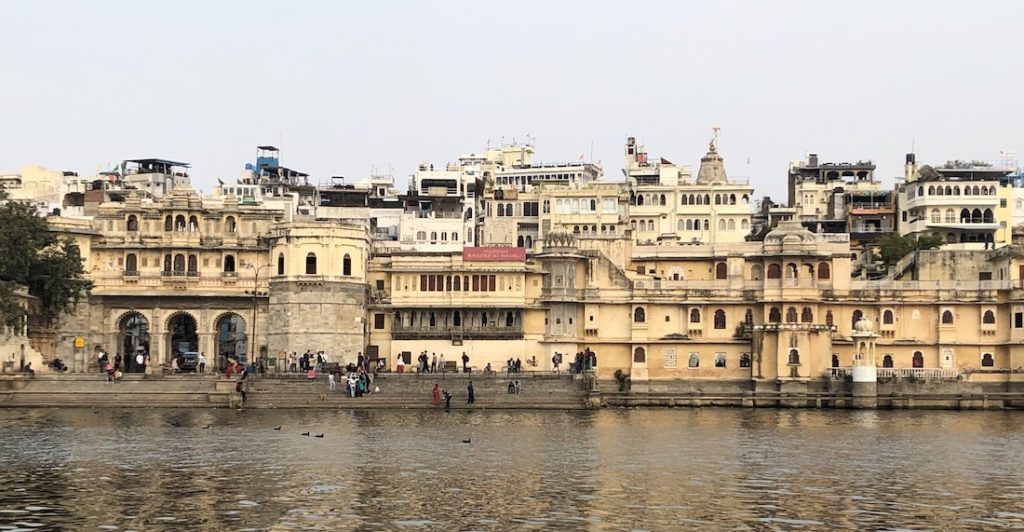
Udaipur’s historic centre, enclosed by the city walls and accessed by a collection of gates, attracted the wealthy during its glory years and their handsome mansions help make the city so easy on the eye. Among them is the waterfront Bagore Ki Haveli, an 18th century town house that’s been turned into a museum. Built by a chief minister to the royals, several rooms illustrate life as it would’ve been lived in times past and are furnished with historic goods and chattels. The haveli stands close to the Gangaur Ghat, the main gate and wharf on the banks of Lake Pichola with steps down to the murky water. Another attractive piece of architecture, it’s a popular spot for photographs and with touts, all with the same story to tell about a family member who’s a tailor in Savile Row.
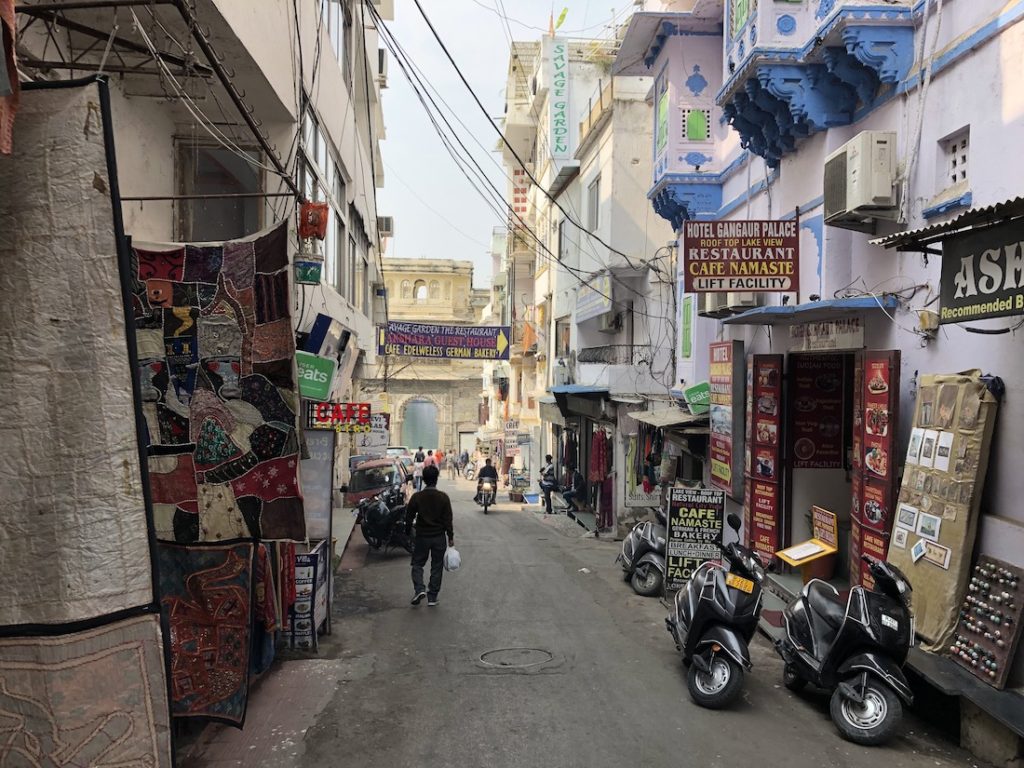
The hilly streets that lead away from the ghat, to the palace and to other parts of the city centre are lined with shops and bazaars, shrines and eateries. They’re colourful, reasonably chaotic in the Indian style, overshadowed by a tangle of cables and wires, and busy with motorcyclists, tuk tuks and people rushing to and fro down the often potholed streets. It’s polluted, dusty and the soundtrack features the incessant blasting of car and bike horns that are everywhere in India. While there is still much obvious poverty, it’s obvious that Udaipur is more prosperous than some of the other cities we’d visited on our tour. Litter is less of a problem in the city centre and the suburbs, the shops look smarter and better cared for. We had a wander round, partly in the quest to find an ATM, found a Victorian-era clocktower, failed to find said ATM but noted many atmospheric alleys and beautiful temples. It was, of course, necessary to watch out for cattle and their deposits but historic Udaipur is an easy place to like.
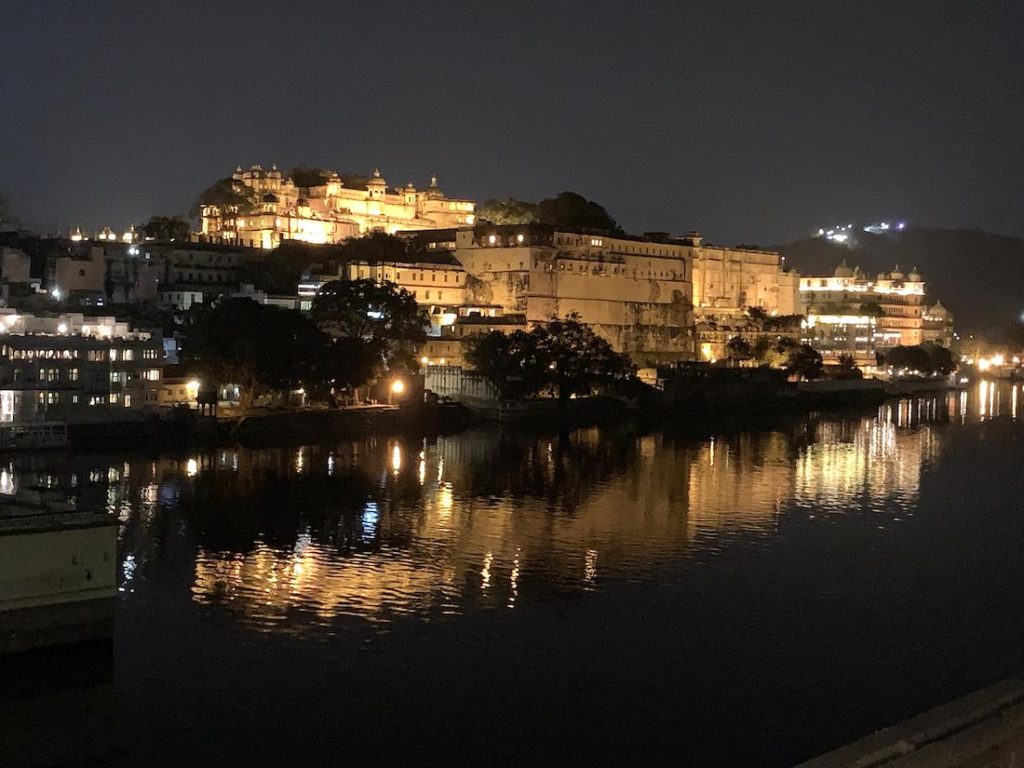
That city centre looks splendid during the day and is just as memorable at night, the reflections of the handsomely illuminated buildings shimmering in the lake. While we ate a couple of times in our hotel, and drank the evenings away in its quiet if friendly bar, we also got a bone-shattering tuk tuk into town a few times to dine out. By far the most impressive of the restaurants was the 1559AD, named for the year in which modern Udaipur was founded by Maharana Udai Singhji. Situated on a rooftop with unbeatable views of the City Palace and Gangaur Ghat, we ate excellent local dishes washed down with cocktails and cool beers, but did have to sit cross-legged on cushions for the duration, which left every muscle in my legs and hips twisted and sore.
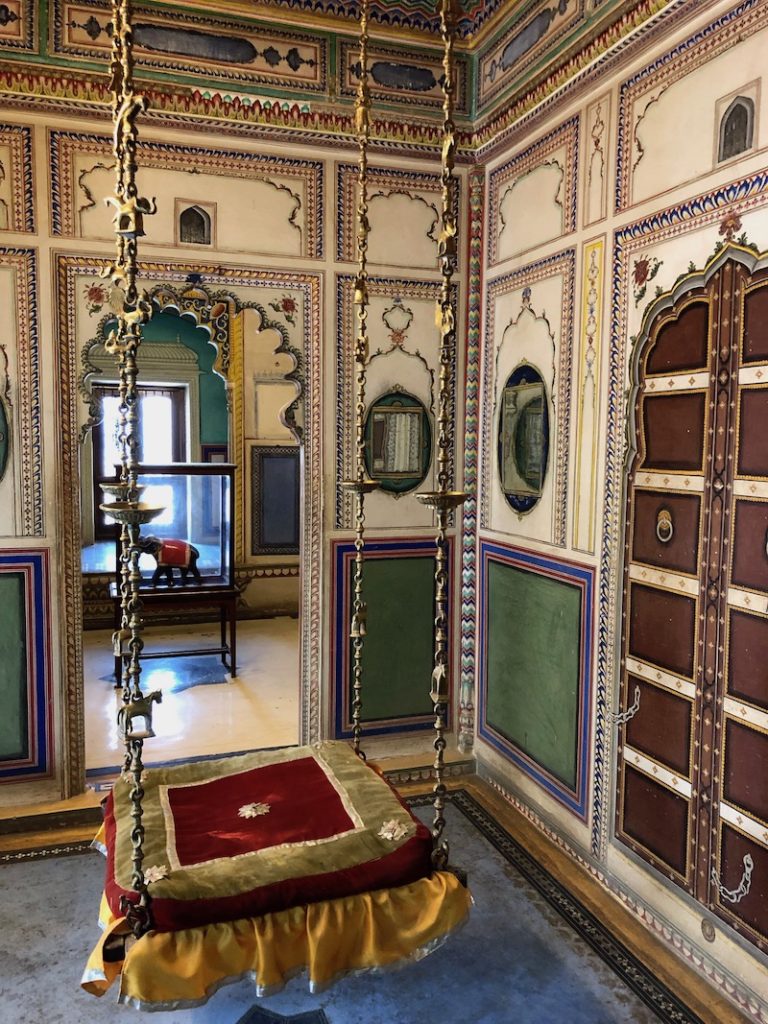
We were careful not to overdo the sightseeing and spent several days relaxing by the Trident’s swimming pool, reading and imbibing. By the time we were ready to leave, I felt relaxed and content, sorry that our holiday was coming to an end. Annoyingly, and with grim timing, we’d both woken on the last day with a mild dose of Delhi belly, which is the last thing either of us needed with a flight to take back to the said Delhi. That flight back from Udaipur, with Air India, was as challenging as our medical condition, notable for the sort of horrific turbulence that had me thinking that we were a) on a collapsing rollercoaster rather than a plane and b) about to meet our maker. Somehow we made it through the storm and the plane landed intact, leaving us free to spend a few hours at the Pullman Aerocity Hotel on the outskirts of Delhi Airport before our overnight flight back to London on a British Airways 787.
As ‘last days’ go, it was long and tiring, an anticlimax to what had proved to be one of the most memorable of holidays…

